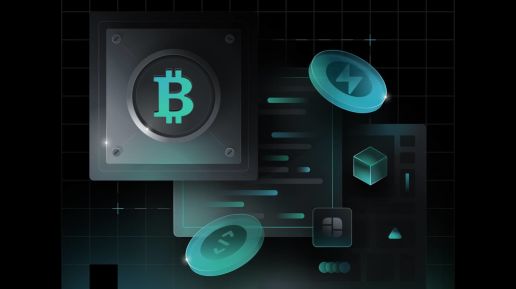Bitcoin uniquely employs a scripting language known as 'Script'. This language isn't just another coding dialect; it's a meticulously designed, stack-based system that processes commands from left to right.
It's the unsung hero behind Bitcoin's seamless transactions, offering a perfect blend of simplicity, reliability, and robustness. But what, exactly, are opcodes? How do they work, and what are some significant opcodes today's Bitcoin user should be aware of?
Understanding Opcodes in Bitcoin Script
At the core of Bitcoin's Script are operation codes, commonly referred to as opcodes. These are not your run-of-the-mill programming instructions; they are the building blocks of Bitcoin's scripting capabilities. Opcodes in Bitcoin Script serve a critical function: they execute predefined operations, enabling a wide range of customizable and conditional transactions.
This versatility is a key aspect of what makes Bitcoin's network both flexible and secure. Each opcode is like a specialized tool in a toolbox, designed to perform specific tasks that ensure the smooth functioning of Bitcoin transactions.
The significance of opcodes
Why are opcodes so crucial in the Bitcoin ecosystem? They are instrumental in defining how transactions are formulated and executed within the network. From simple transfers to complex, multi-conditional contracts, opcodes enable the Bitcoin network to handle a plethora of transaction types, each with its own set of rules and conditions.
This flexibility is paramount in maintaining the integrity and efficiency of the Bitcoin network, ensuring that it remains a reliable and adaptable platform for digital currency transactions.
OP_CAT: A Legacy Opcode with a Modern Twist
One intriguing example of an opcode is OP_CAT. This particular opcode has a rich history within Bitcoin's development. Originally part of Bitcoin's early versions, OP_CAT was sidelined in 2010 due to concerns about potential memory-related issues. However, with the advent of technology and enhanced understanding, these concerns have been alleviated. The re-emergence of OP_CAT is particularly significant. It's not just a comeback story; it's about unlocking new possibilities in Bitcoin scripting.
Today, OP_CAT is viewed through a lens of modern applicability. It has the potential to implement 'covenants' – specific conditions under which Bitcoin outputs can be issued. This brings a new dimension to Bitcoin's functionality, allowing for more controlled and scalable transactions. Moreover, OP_CAT's revival plays a significant role in simplifying and optimizing the BitVM concept. BitVM, which stands for Bitcoin Virtual Machine, is a proposed system for verifying calculations and operations on Bitcoin. With OP_CAT, BitVM's implementation could become more efficient and user-friendly, opening doors to new applications and innovations in the Bitcoin network.
To celebrate the revival of OP_CAT, Taproot Wizards, creators of one of the first Ordinals collections that launched following the Ordinals protocol, recently introduced the Quantum Cats. The Quantum Cats are a collection of 3333 inscriptions of cats on the Bitcoin network with artwork that evolves over time. The 1 of 1 genesis cat was even featured on Sothebys.
Currently, the auction for the genesis cat runs until January 22nd and the current highest bid is $50k.
OP_CTV: Pioneering New Frontiers in Bitcoin Scripting
Another noteworthy opcode is OP_CHECKTEMPLATEVERIFY (OP_CTV), brought into the limelight by BIP-119, a Bitcoin Improvement Proposal. OP_CTV is a testament to the evolving nature of Bitcoin scripting. It's not just an addition to the opcode library; it's a gateway to a plethora of new functionalities and applications within the Bitcoin network.
The introduction of OP_CTV is poised to revolutionize how Bitcoin transactions are conducted. It aims to enable advanced features like vaults, congestion-controlled batching, non-interactive payment channel creation, and payment pools. Each of these features brings a unique enhancement to Bitcoin's capabilities.
Vaults, for instance, are an innovative concept in the realm of Bitcoin wallets. They are designed to allow transactions in controlled, incremental steps, incorporating emergency mechanisms for added security. This feature is particularly exciting because it addresses a critical need in the digital currency space – the need for secure, yet user-friendly, storage and transaction solutions.
Moreover, OP_CTV's introduction is planned to be seamless, with minimal impact on the existing Bitcoin codebase. This strategic approach ensures that the existing functionalities of Bitcoin are not disrupted, while paving the way for future advancements and new use cases. It reflects a forward-thinking mindset in Bitcoin's development, where innovation is balanced with stability and reliability.
The Future of Bitcoin Scripting
In conclusion, Bitcoin's opcodes are not just lines of code; they are the fundamental elements that shape the network's functionality and future. From the historical significance of OP_CAT to the innovative potential of OP_CTV, these opcodes are more than just tools; they are the catalysts of evolution in the Bitcoin ecosystem. They represent a unique blend of technological sophistication, security, and adaptability, continually evolving to meet the complex demands of the digital currency landscape.
As we delve deeper into the intricacies of Bitcoin scripting, it becomes evident that opcodes are more than just components of a programming language. They are the keystones of a digital architecture that is shaping the future of finance. The journey of Bitcoin scripting is an ongoing one, marked by constant innovation and adaptation. In this journey, opcodes stand as the foundational pillars, guiding Bitcoin towards a future where digital transactions are not only secure and efficient but also adaptable and innovative.

